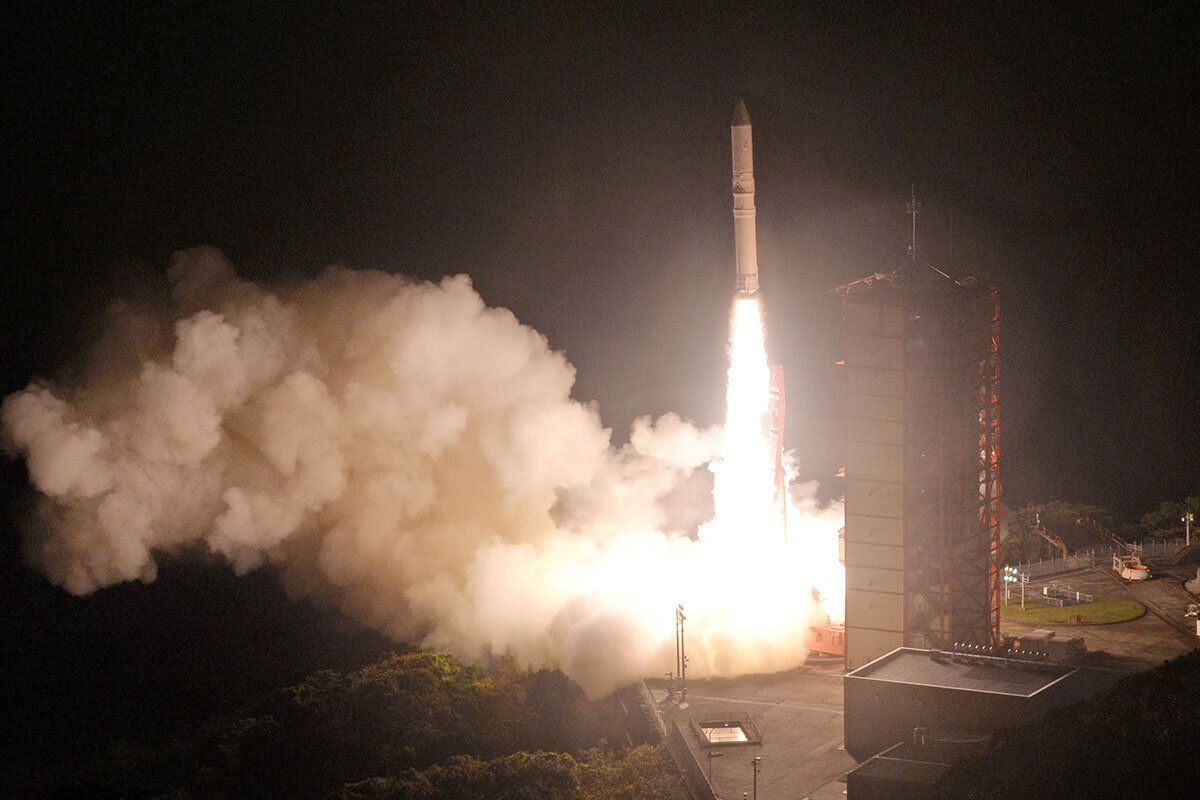Two ways this Japanese satellite could improve space travel
Loading...
Japan’s space agency has launched a new satellite designed to study the computer-busting radiation of the Van Allen belts.
The Exploration of energization and Radiation in Geospace satellite (ERG) successfully entered orbit on Tuesday, according to Japan Aerospace Exploration Agency (JAXA) officials. The spacecraft is expected to settle into a highly elliptical orbit, moving outward and drawing near as it travels around the planet.
The scientific benefits of this launch may be twofold. The satellite itself could provide new insight into the Van Allen radiation belts, which may negatively impact electronic devices and even astronauts themselves. Then there’s the rocket that delivered it, which could provide a model for cheaper launches in the future.
Two Van Allen radiation belts are each loaded with a stream of charged particles that likely originated from the sun that now circle our planet endlessly, trapped by Earth’s magnetic field. The phenomenon has become a major subject of spaceflight studies, which suggest the radiation could be harmful to people and electronics alike.
“On one shuttle flight I was on, we took an IBM – now it’s Lenovo – one of the ThinkPad computers, just to see what the impact of the radiation environment in lower orbit would be," Jeffrey Hoffman, a former NASA astronaut and professor of aeronautics at MIT, tells ���Ǵ��� in a phone interview. "About once a day it would just hang up, because a charged particle would go through it and mess up the memory.”
A barrage of charged particles from the Van Allen belts can stall or even destroy sophisticated computer systems. That’s because most electronic devices are powered by semiconductor transistors. As the Monitor reported in November:
Transistors are made of semiconductors – that is, any solid more conductive than an insulator but less conductive than most metals. Semiconductive materials have a band gap, which means they need plenty of outside energy to start the flow of electrons. Those electrons collide with atoms as they race through the transistor, limiting their velocity and hindering the speed of the device.
There are a few ways of mitigating the issue, but none is ideal. Instruments using radiation-hardened circuitry are more tolerant of charged particles, but they don’t offer the same sensitivity that unguarded devices do. And though scientists have made early progress in semiconductor-free electronics, the technology just isn’t scalable yet.
In the meantime, satellite researchers must avoid strongly radiated areas. It has proven to be an acceptable solution for now, but this approach could leave gaps in data collection over time. That’s why more research into the behavior of the Van Allen belts may prove so critical.
“You can’t avoid it," Dr. Hoffman says. "There’s one place over the South Atlantic, called the South Atlantic Anomaly, where the radiation belts dip into Earth. If you have sensitive instruments onboard, they’re turned off when going through that region.”
Epsilon-2, the three-stage rocket that successfully launched ERG into orbit, may also represent a leap forward for Japan’s space program.
As developing nations aim to launch their own communication and weather satellites, many hire foreign contractors to conduct the launch. In an attempt to meet US and European competitors, Japan has turned to solid fuel.
There are two types of rockets: those that burn solid fuel, and those that take liquid. The latter is the efficient choice, since liquid propellant is able to produce more energy per given amount. But solid-burning engines require much fewer components, which makes them considerably cheaper.
“Solids are very simple, and that’s their big advantage," Hoffman says.
For many years, NASA used similar technology to blast satellites into space. But those rockets needed four stages to reach orbit, whereas JAXA’s uses only three.
“You get a lot of thrust out of a solid," Hoffman says. "It’s not quite as efficient, but efficiency isn’t as important right at the beginning of a launch. But once you’re on your way and you get above most of the atmosphere, what you need to do is accelerate and get to orbital velocity. At that point, the mass you have with you is important and you want a more efficient engine.”
But as small satellites like CubeSat become increasingly viable, a market for smaller launchers is emerging. And with less mass to carry, this new generation of launchers may opt for solid fuel.
“There are numerous companies and governments looking at economical launch of small satellites," Hoffman says, "and this is clearly in that line of new launchers.”
But there are limits to solid propellant technology – namely, that they’re not very useful for prolonged space travel.
“Once you light a solid rocket, you can’t turn it off," Hoffman says. "You have to burn the whole thing. It’s fine for your first stage, but for interplanetary travel you really want more efficient propellants and engines you can turn on and off.”





